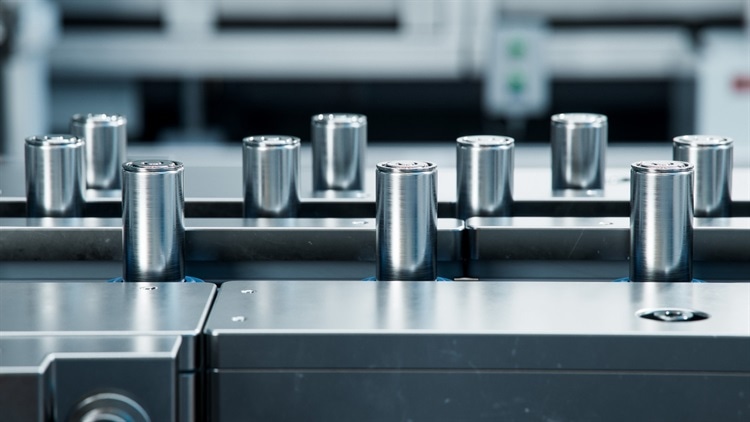High-Entropy Materials: Pioneering the Future of Next-Generation Batteries

The global demand for safer, longer-lasting, and higher-performing energy storage is pushing materials science into uncharted territory. A recent review published in Nano-Micro Letters by researchers at Fuzhou University highlights the immense potential of high-entropy materials (HEMs) as a transformative solution for batteries that can operate under extreme conditions—from polar expeditions to aerospace applications (AZoM News).
Why Energy Storage Needs High-Entropy Innovation
Today’s lithium-ion batteries face well-known limitations: limited cycle life, structural degradation, reliance on scarce elements, and vulnerability to extreme temperatures. With global energy needs rising and fossil fuel reliance decreasing, the urgency for next-generation batteries has never been greater.
High-entropy materials—whether alloys, oxides, or MXenes—offer unique solutions by harnessing configurational entropy, where multiple principal elements (five or more) combine to form stable, single-phase structures. This entropy-driven stabilization suppresses degradation and enables entirely new electrochemical pathways.
Key Advantages of High-Entropy Materials in Batteries
- Structural Stability: High entropy suppresses phase separation, lattice distortion, and transition metal dissolution. As a result, battery lifetimes can exceed 5,000 cycles.
- Cocktail Effect: The synergy of multiple elements allows fine-tuning of redox potentials, ionic conductivity, and catalytic activity—without depending on costly noble metals.
- Wide-Temperature Resilience: Batteries using HEMs retain over 90% capacity between -50 °C and 80 °C, making them ideal for extreme climates, aerospace, and defense applications.
- High Performance: In lithium-ion systems, cobalt-free HEO spinels achieved 1,645 mAh g−1 at 0.2 A g−1, maintaining 596 mAh g−1 after 1,200 cycles.
Classes of High-Entropy Materials
HEMs can be broadly grouped into three categories:
- High-Entropy Alloys (HEAs): Metallic systems combining multiple principal elements for structural stability and enhanced electrochemical properties.
- High-Entropy Oxides (HEOs): Complex oxides with tunable band gaps and excellent ion transport pathways.
- High-Entropy MXenes: Two-dimensional materials offering superior conductivity and catalytic activity, particularly promising for next-generation electrodes.
These materials are often synthesized through methods like carbothermal shock and liquid-metal reduction, which produce nanoparticles, nanosheets, and even 3D-printed electrode structures below 400 °C.
Challenges and Future Directions
To transition from laboratory-scale experiments to industrial gigafactories, HEM research must overcome several hurdles. These include:
- Scalable and cost-effective synthesis methods.
- Advanced in situ characterization techniques to track material behavior in real time.
- Open data platforms to accelerate collaboration and design optimization.
If these challenges are addressed, HEMs could redefine the battery industry—delivering long-life, high-performance, and sustainable energy storage across lithium, sodium, potassium, and wide-temperature systems.
Conclusion
High-entropy materials represent a paradigm shift in the design of advanced batteries. By combining multiple elements to stabilize structures and unlock novel properties, they hold the key to reliable, high-performance energy storage for the most demanding applications on Earth and beyond. With further innovation and industrial adoption, HEMs could power a cleaner, more resilient energy future.
Footnote: This blog article was prepared with the assistance of AI technologies for enhanced clarity, structure, and readability.
Sponsored by PWmat (Lonxun Quantum) – a global leader in GPU-accelerated materials simulation software for cutting-edge quantum, energy, and semiconductor research. Learn more at: https://www.pwmat.com/en
📘 Explore their brochure to discover advanced simulation features and industry success stories: PWmat PDF Brochure
🎁 Interested in testing PWmat? Request a free trial tailored to your R&D needs: Free Trial Request
📞 Phone: +86 400-618-6006
📧 Email: support@pwmat.com
SEO Keywords: high-entropy materials, advanced batteries, high-entropy alloys, high-entropy oxides, MXenes, wide-temperature batteries, long cycle life energy storage, Nano-Micro Letters
#MaterialsScience #HighEntropyMaterials #AdvancedBatteries #EnergyStorage #HEAs #HEOs #MXenes #WideTemperatureBatteries #QuantumServerNetworks

Comments
Post a Comment